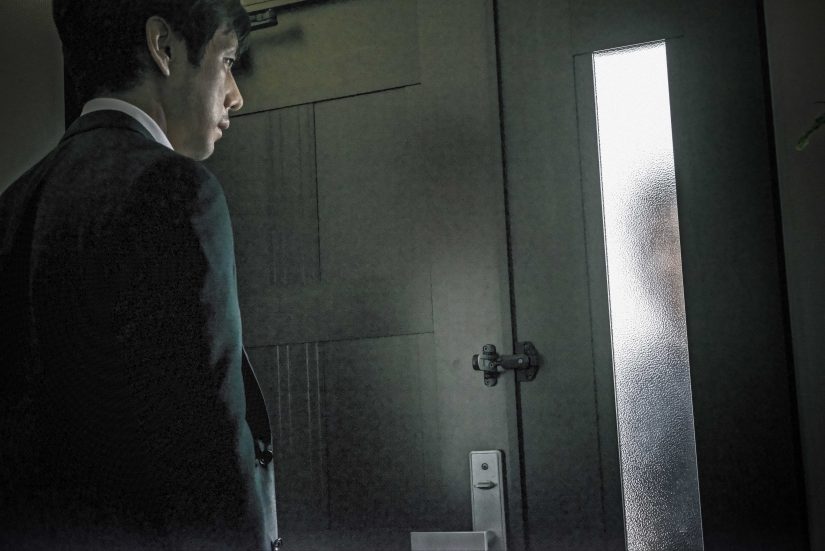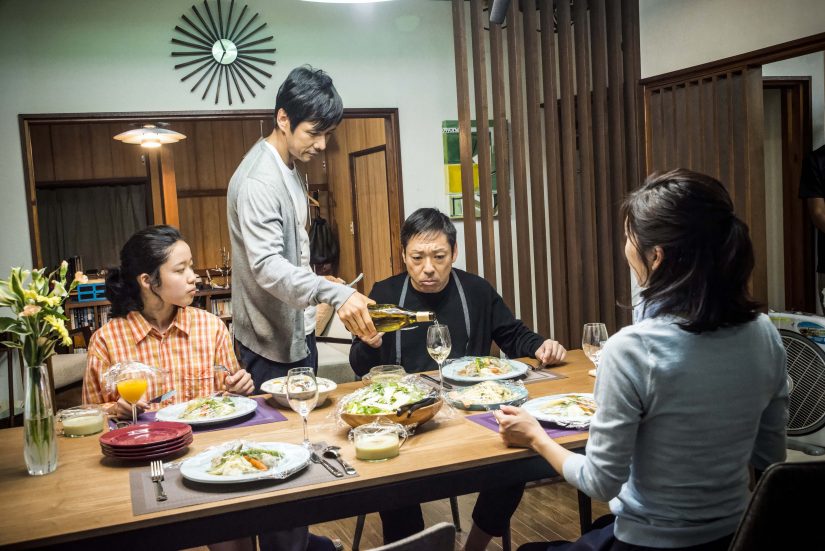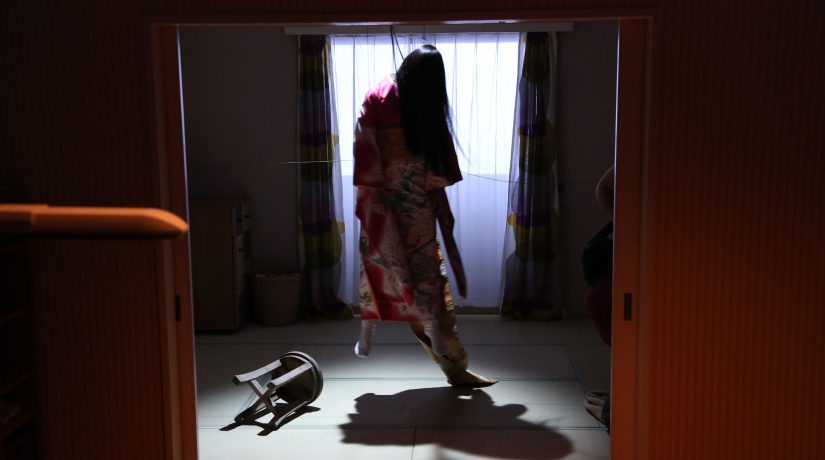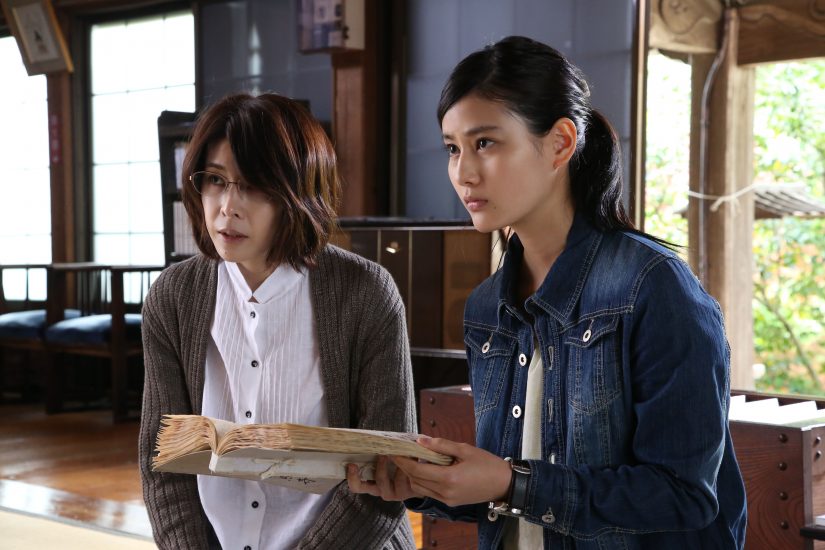Weirdly enough, horror films in their Western formula are some of the most comforting movies you can watch – you are faced with evil in its most monstrous and resilient forms, yet at the end of the day, it is always defeated. But what do you do when evil is just another layer of existence, meant to live alongside you as much as good is meant to? Kiyoshi Kurosawa’s “Creepy” and Yoshihiro Nakamura’s “The Inerasable” dive into the spiralling whirlwinds of obsession, turning safe havens into lairs of inescapable torment.
The devil’s in the home

When you find yourself ridden with an unease you’re unable to place, faintly aware of the unnerving and chilling effect mundane noises have on you, while spaces continuously shift, conceal and reveal themselves in a carefully orchestrated manner, you recognize the familiar flavour of clever and understated horror that Kiyoshi Kurosawa delivers.
With his latest foray into genre filmmaking, Kurosawa once again proves his prowess in portraying the anguish of people living within a society in the process of redefining itself, a society giving birth to monsters hatched from insecurity and alienation. He chooses as starting point a trope quite popular in modern horror films, rooted in the dissolution of the nuclear family. We’re well accustomed to it from “Amityville Horror” or The Shining” and their signature failed patriarchs. In “Creepy”, however, it’s both the man and the woman that destroy their blissful microcosm, signalling a fundamental failure of the basic structures that govern our lives.

After calculated risk during one of his cases goes horribly wrong, detective Koichi Takakura decides to give up his badge and settle for suburban bliss as a husband and Professor of Criminal Psychology. However, when a former colleague asks for help in solving a 6-year old missing family case, the investigator side of him reawakens with a vengeance. This leaves his wife, Yasuko, alone in trying to navigate the challenges of adapting to a new and unwelcoming place, attempting to create a home and good relations with the neighbours. The difficulties they are faced with leaves them both blind-sided to a looming threat – an albeit awkward, yet seemingly harmless neighbour who will draw them both in a downward spiral of obsession, alienation and loss of self.
Much like the character Mamiya from “Cure” (also directed by Kurosawa), Nishino is a human-void, exploiting and unearthing the character’s festering fears and frustrations. A serial killer enabler, he is what Philip L. Simpson calls a “shape-shifter, who violates societal taboos through the doubling of normalcy and madness in one composite figure”. What is truly fearsome about him is that he does not get the Norman Bates treatment: there is no final scene that psychoanalyzes and explains his actions, thus putting our mind at ease that we finally have the monstrous figured out. Kurosawa doesn’t give us the comforting illusion of control and is right to do so, since Nishino, like many psychos in Japanese films, isn’t the product of a messed up family, rather the logical conclusion of a society of alienation, detachment and lack of feeling.

He also captures the essence of how Kurosawa designs his film and compositions: an improbable mixture of conflicting characteristics, he hides in plain sight (mirroring the director’s use of objects to conceal certain important parts of the frame or even the characters at times), the human embodiment of the impossible architecture of the basement where all the crimes are carried out. People are intimately connected to the places they live in, and physical landscapes are linked to emotional landscapes or landscapes of the memory: the drift in Koichi and Yasuko’s marriage is obvious from the fact that they’re always found in separate rooms, while when one of Nishino’s would-be victims tries to remember essential memories from the past, she needs to walk around the room to jump-start the mental images.
“Creepy” has Kiyoshi Kurosawa written all over it, from the way in which characters are faced with and cross visual and physical barriers, to the haunting images of understated horror, or the obsessive use of mundane sounds that become the film’s own variation on the “Twisted Nerve” effect from “Kill Bill”, things we are all the more grateful for.
The devil’s in the details

You catch it out of the corner of your eye. Your eyes brush past it as you’re lowering your gaze towards your computer’s screen. Your ears suddenly jerk as if sensing an innocuous sound. It’s a trick of the eye, a phantasm of your hearing that slowly build up to a tortuous sense of fear and unease. A Chinese drop that slowly chips away at your sanity.
Yoshihiro Nakamura knows how to use a slow accumulation of horror to chill us right to our bones. His first venture into the horror in more than 10 years, “The Inerasable” is a low-key exploration of overlapping layers of existence, in which the world of the living co-exists on the same plane as that of the dead. Very much aware of itself and where it comes from, the film continuously references and deconstructs ghost stories which lay at the heart of many pieces of Japanese horror.

An unnamed horror and mystery author who transforms her readers’ submissions into fiction one day gets a letter from a young student, Kobu, writing about strange noises in her new apartment. Having piqued her curiosity, the author offers her help, trying to explain the strange occurrences, only to become involved in uncovering a legacy of suffering and haunting apparitions spanning generations. What starts off as a relatively detached initial investigation of these unusual happenings turns into a full immersion into a history of resentment and bitterness infesting physical spaces.
The self-awareness that the film (and, as an extension, its characters) shows seems to keeps us at a safe distance from the ghostly protagonists, as if we’ve outsmarted them. It’s a defence mechanism that we often turn to: if we can fictionalize supposed ghost stories (as the author does in “The Inerasable”), organize everything neatly into chapters (as the movie itself is organized) and figure out the patterns of what happens around us (as the protagonists constantly do), then we settle into an illusion of control. But it is exactly the continuous nature of these stories that end up stripping us of any control: the stories, much like the ghosts themselves, are inescapable, all-powerful and immortal.
Nakamura deals beautifully with the intermingling of past and present. Each tale is shown rather than recalled. He dives effortlessly further and further into the past through a series of expository flash-backs, shifting compositions and shooting styles to match the period in which the events take place. In this way, these stories are just as much “present” as is the main plotline, just as real as they are fictitious. This adds up to a disquieting sense of being on the border of two worlds in which we walk down an imaginary path we ourselves construct.

The director is never overly explicit in what he shows as he understands the power a silhouetted spectre behind a door of frosted glass can have on his audience. The instances when he does opt for being more obvious, such as using CGI for some spectres, he does so sparingly and just to seal the fate of the characters: they have already past the proverbial “point of no return”; they now fully see the spectres because they too have been fully immersed into the curse’s never-ending loop. However, the area where the director best showcases his shrewd understanding of his audience in that of sound design. As the unnamed author character says it, “details are the essence of a horror story” and Nakamura hits it out of the ball park. Gusts of wind or burning coals, eerie swishes of fabric on tatami mats or hellish whispers incessantly resound in our ears. The most mundane of sounds are transformed into omens of unspeakable horror and the very walls that are meant to protect us become the walls that condemn us.
The devil is in the home just as much as he is in the details.


